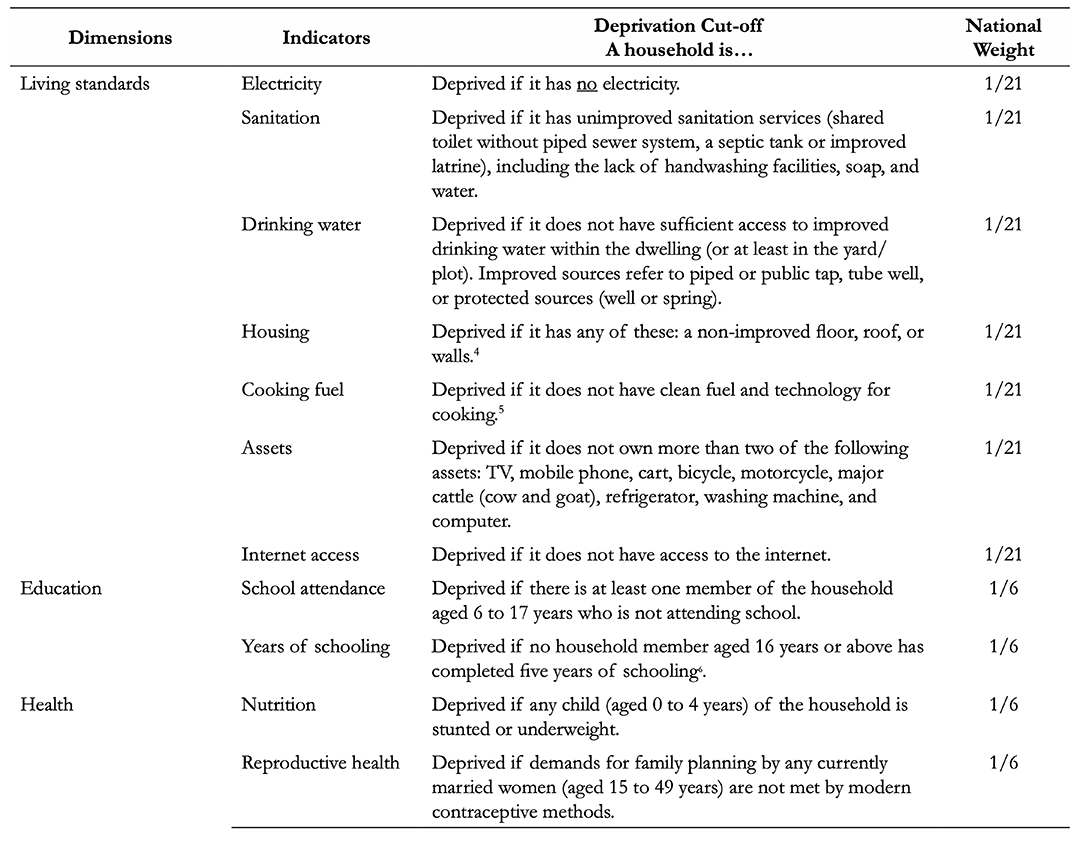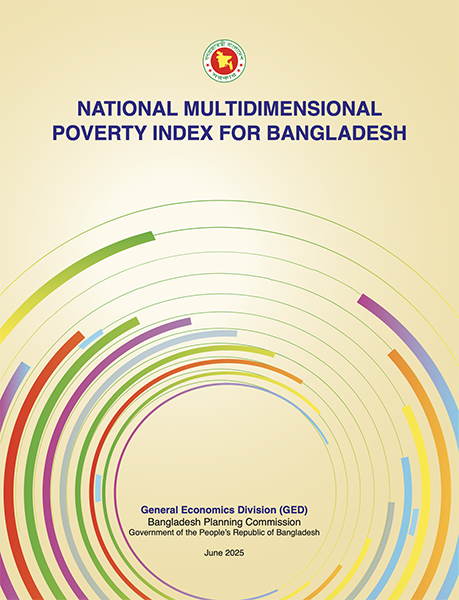Bangladesh MPI
MPI originally introduced: 2025
Latest results: Bangladesh MPI 2025
The General Economics Division (GED) of the Bangladesh Planning Commission, in collaboration with UNICEF Bangladesh, Bangladesh Bureau of Statistics (BBS) and the Oxford Poverty and Human Development Initiative (OPHI), have developed a National MPI based on the 2019 Bangladesh Multiple Indicator Cluster Survey (MICS). The Bangladesh MPI is an official poverty measures that complements monetary poverty statistics by offering a more comprehensive understanding of deprivation across multiple dimensions.
The National MPI enables disaggregation at national, divisional, and all 64 district levels, enhancing its relevance for local planning and resource allocation. This report also presents trends over time using a harmonized national MPI. To ensure comparability, MPI estimates were recalculated using MICS data from both 2012–13 and 2019, allowing for consistent analysis of progress and emerging challenges in multidimensional poverty reduction.
- Citation: GED (2025). National Multidimensional Poverty Index for Bangladesh, General Economics Division (GED), Bangladesh Planning Commission, Government of the People’s Republic of Bangladesh.
Bangladesh MPI structure: dimensions and indicators
Poverty Cut-Off: A person is considered poor if they are deprived in 33.33% or more of the 11 weighted indicators.

Source: GGED (2025). National Multidimensional Poverty Index for Bangladesh, General Economics Division (GED), Bangladesh Planning Commission, Government of the People’s Republic of Bangladesh, p. 22.
Global MPI
The annual global MPI produced by the Oxford Poverty and Human Development Initiative in partnership with the Human Development Report Office of the United Nations Development Programme is an internationally comparable index of acute multidimensional poverty. OPHI publishes Country Briefings summarising poverty statistics of the global MPI for each country.
Visit the most recent Global MPI Country Briefing for Bangladesh based on MICS year 2019.
More info on National MPI of Bangladesh
Official institution responsible for statistics
- The General Economics Division (GED), Bangladesh Planning Commission.
Events
- 25 September 2019 | Intervention by H.E. Shamsul Alam, Member (Senior Secretary), National Planning Commission, Bangladesh at UNGA 74
- 25 February 2021 | Intervention by Mohammad Tajul Islam, Director General, Bangladesh Bureau of Statistics at UNSC 52
- 23 September 2021 | Intervention by H.E. Shamsul Alam, State Minister of Planning, Bangladesh at UNGA 76
Press Releases/News
- 18 March 2013 | Nepal and Bangladesh are star performers in cutting multidimensional poverty
- 31 July 2025 | One-third of children in Bangladesh are trapped in multidimensional poverty: UNICEF
- 31 July 2025 | One in four people live in multidimensional poverty: GED report
- 31 July 2025 | One in every four Bangladeshis lives in multidimensional poverty: Report
- 31 July 2025 | One-third of Bangladeshi children face multidimensional poverty: UNICEF
- 31 July 2025 | 4 crore people face multidimensional poverty
- 31 July 2025 | Bangladesh launches an official national MPI



